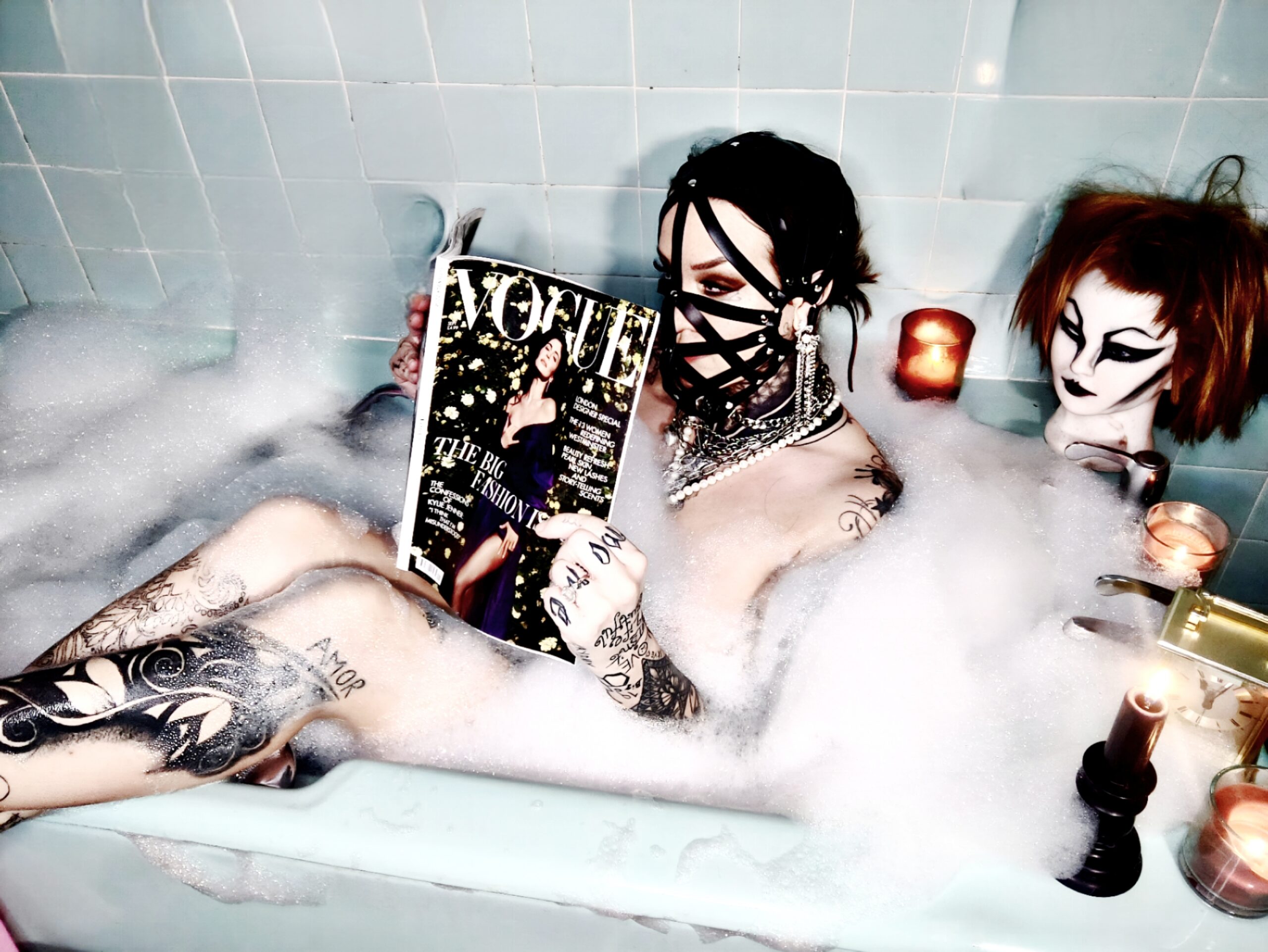The Rise Of Pansexuality In Pop Culture And Its Impact On Modern Love

The Visibility of Pansexuality in Media
The representation of pansexuality in media has undergone a dramatic transformation, moving from near invisibility to a prominent presence in contemporary pop culture. This newfound visibility has had a significant impact on modern understandings of love and relationships, challenging traditional notions of sexuality and fostering greater acceptance and inclusivity.
Representation in Film and Television
The representation of pansexuality in media has undergone a dramatic transformation, moving from near invisibility to a prominent presence in contemporary pop culture. This newfound visibility has had a significant impact on modern understandings of love and relationships, challenging traditional notions of sexuality and fostering greater acceptance and inclusivity.
One notable trend is the increased portrayal of pansexual characters in film and television. These characters are no longer relegated to stereotypical or marginalized roles but are presented as complex individuals with diverse backgrounds, motivations, and relationships. This nuanced representation helps to break down misconceptions about pansexuality and demonstrate the validity of different sexual orientations.
- Shows like “Sex Education” and “The Umbrella Academy” feature prominent pansexual characters who navigate their identities with authenticity and explore themes of self-discovery, acceptance, and love.
- Films such as “Moonlight” and “Booksmart” have also incorporated pansexual narratives, highlighting the richness and diversity of human experience.
The rise of pansexuality in pop culture has also fostered a sense of community and belonging for individuals who identify as pansexual. By seeing themselves reflected in media, these individuals feel seen, validated, and empowered. This visibility can have a profound impact on mental health and well-being, reducing feelings of isolation and fostering self-acceptance.
Music Industry Embracing Pansexual Artists
The music industry has also embraced pansexual artists, creating a space for their voices and experiences to be heard. Musicians like Kim Petras, Hayley Kiyoko, and King Princess have gained widespread recognition for their candid lyrics about love and relationships that defy traditional gender norms.
Their music resonates with audiences who identify as pansexual or simply appreciate the celebration of inclusivity and self-expression. These artists challenge societal expectations and contribute to a more accepting and understanding environment.
Social Media Platforms as Spaces for Pansexual Expression
Social media platforms have become vital spaces for pansexual expression and community building.
Platforms like Twitter, Instagram, and TikTok provide spaces where individuals can connect with others who share their experiences, find support, and advocate for greater visibility and acceptance.
Users create content that celebrates pansexuality, shares personal stories, educates others about the identity, and challenges stereotypes.
Hashtags like #pansexual, #panpride, and #visibleandvalid have become rallying cries, fostering a sense of belonging and amplifying pansexual voices.
Changing Perceptions of Love and Relationships
The landscape of love and relationships is continually evolving, shaped by cultural shifts and changing societal norms. One significant force driving this evolution is the growing visibility of pansexuality in popular culture.
Breaking Down Binary Gender Norms
This increased representation challenges traditional binary understandings of gender and sexuality, paving the way for more inclusive and accepting relationships.
By portraying diverse sexualities as normal and relatable, media contributes to a broader societal shift towards embracing fluidity and individuality in love and partnerships.
The normalization of pansexuality empowers individuals to explore their identities freely and authentically, breaking down barriers that previously confined them to rigid definitions of love and attraction.
Challenging Heteronormativity
The representation of pansexuality in media has undergone a dramatic transformation, moving from near invisibility to a prominent presence in contemporary pop culture. This newfound visibility has had a significant impact on modern understandings of love and relationships, challenging traditional notions of sexuality and fostering greater acceptance and inclusivity.
One notable trend is the increased portrayal of pansexual characters in film and television. These characters are no longer relegated to stereotypical or marginalized roles but are presented as complex individuals with diverse backgrounds, motivations, and relationships. This nuanced representation helps to break down misconceptions about pansexuality and demonstrate the validity of different sexual orientations.
- Shows like “Sex Education” and “The Umbrella Academy” feature prominent pansexual characters who navigate their identities with authenticity and explore themes of self-discovery, acceptance, and love.
- Films such as “Moonlight” and “Booksmart” have also incorporated pansexual narratives, highlighting the richness and diversity of human experience.
The rise of pansexuality in pop culture has also fostered a sense of community and belonging for individuals who identify as pansexual. By seeing themselves reflected in media, these individuals feel seen, validated, and empowered. naughty penis pumps This visibility can have a profound impact on mental health and well-being, reducing feelings of isolation and fostering self-acceptance. impact toys
The music industry has also embraced pansexual artists, creating a space for their voices and experiences to be heard. Musicians like Kim Petras, Hayley Kiyoko, and King Princess have gained widespread recognition for their candid lyrics about love and relationships that defy traditional gender norms.
Their music resonates with audiences who identify as pansexual or simply appreciate the celebration how to use a rabbit cock ring of inclusivity and self-expression. These artists challenge societal expectations and contribute to a more accepting and understanding environment.
Social media platforms have become vital spaces for pansexual expression and community building.
Platforms like Twitter, Instagram, and TikTok provide spaces where individuals can connect with others who share their experiences, find support, and advocate for greater visibility and acceptance.

Users create content that celebrates pansexuality, shares personal stories, educates others about the identity, and challenges stereotypes.
Hashtags like #pansexual, #panpride, and #visibleandvalid have become rallying cries, fostering a sense of belonging and amplifying pansexual voices.
The landscape of love and relationships is continually evolving, shaped by cultural shifts and changing societal norms. One significant force driving this evolution is the growing visibility of pansexuality in popular culture.
This increased representation challenges traditional binary understandings of gender and sexuality, paving the way for more inclusive and accepting relationships.
By portraying diverse sexualities as normal and relatable, media contributes to a broader societal shift towards embracing fluidity and individuality in love and partnerships.
The normalization of pansexuality empowers individuals to explore their identities freely and authentically, breaking down barriers that previously confined them to rigid definitions of love and attraction.
Increased Acceptance and Inclusivity
The representation of pansexuality in media has undergone a dramatic transformation, moving from near invisibility to a prominent presence in contemporary pop culture. This newfound visibility has had a significant impact on modern understandings of love and relationships, challenging traditional notions of sexuality and fostering greater acceptance and inclusivity.
One notable trend is the increased portrayal of pansexual characters in film and television. These characters are no longer relegated to stereotypical or marginalized roles but are presented as complex individuals with diverse backgrounds, motivations, and relationships. This nuanced representation helps to break down misconceptions about pansexuality and demonstrate the validity of different sexual orientations.
- Shows like “Sex Education” and “The Umbrella Academy” feature prominent pansexual characters who navigate their identities with authenticity and explore themes of self-discovery, acceptance, and love.
- Films such as “Moonlight” and “Booksmart” have also incorporated pansexual narratives, highlighting the richness and diversity of human experience.
The rise of pansexuality in pop culture has also fostered a sense of community and belonging for individuals who identify as pansexual. By seeing themselves reflected in media, these individuals feel seen, validated, and empowered. This visibility can have a profound impact on mental health and well-being, reducing feelings of isolation and fostering self-acceptance.
The music industry has also embraced pansexual artists, creating a space for their voices and experiences to be heard. Musicians like Kim Petras, Hayley Kiyoko, and King Princess have gained widespread recognition for their candid lyrics about love and relationships that defy traditional gender norms.
Their music resonates with audiences who identify as pansexual or simply appreciate the celebration of inclusivity and self-expression. These artists challenge societal expectations and contribute to a more accepting and understanding environment.
Social media platforms have become vital spaces for pansexual expression and community building.
Platforms like Twitter, Instagram, and TikTok provide spaces where individuals can connect with others who share their experiences, find support, and advocate for greater visibility and acceptance.
Users create content that celebrates pansexuality, shares personal stories, educates others about the identity, and challenges stereotypes.
Hashtags like #pansexual, #panpride, and #visibleandvalid have become rallying cries, fostering a sense of belonging and amplifying pansexual voices.
The landscape of love and relationships is continually evolving, shaped by cultural shifts and changing societal norms. One significant force driving this evolution is the growing visibility of pansexuality in popular culture.
This increased representation challenges traditional binary understandings of gender and sexuality, paving the way for more inclusive and accepting relationships.
By portraying diverse sexualities as normal and relatable, media contributes to a broader societal shift towards embracing fluidity and individuality in love and partnerships.
The normalization of pansexuality empowers individuals to explore their identities freely and authentically, breaking down barriers that previously confined them to rigid definitions of love and attraction.
Impact on Dating Culture and Modern Romance

The representation of pansexuality in media has undergone a dramatic transformation, moving from near invisibility to a prominent presence in contemporary pop culture. This newfound visibility has had a significant impact on modern understandings of love and relationships, challenging traditional notions of sexuality and fostering greater acceptance and inclusivity.
Dating Apps and Online Platforms Adapting to Inclusivity
The rise of pansexuality in pop culture has led to a shift in how modern dating is viewed. Dating apps and online platforms have been quick to adapt, embracing inclusivity and reflecting this evolving landscape.
One significant change is the inclusion of pansexual identities as separate options on many dating apps. This allows individuals who identify as pansexual to more accurately represent themselves and connect with others who share their experiences.
Beyond adding identity labels, platforms are also incorporating features that promote inclusivity and understanding. Some apps offer educational resources about pansexuality and other sexual orientations, helping users broaden their knowledge and perspectives.
Another important development is the rise of dating communities and groups specifically for pansexual individuals. These online spaces provide a sense of belonging and support, allowing people to connect with like-minded individuals and share their experiences.
Open Communication and Exploration of Identities
The representation of pansexuality in media has undergone a dramatic transformation, moving from near invisibility to a prominent presence in contemporary pop culture. This newfound visibility has had a significant impact on modern understandings of love and relationships, challenging traditional notions of sexuality and fostering greater acceptance and inclusivity.
One notable trend is the increased portrayal of pansexual characters in film and television. These characters are no longer relegated to stereotypical or marginalized roles but are presented as complex individuals with diverse backgrounds, motivations, and relationships. This nuanced representation helps to break down misconceptions about pansexuality and demonstrate the validity of different sexual orientations.
- Shows like “Sex Education” and “The Umbrella Academy” feature prominent pansexual characters who navigate their identities with authenticity and explore themes of self-discovery, acceptance, and love.
- Films such as “Moonlight” and “Booksmart” have also incorporated pansexual narratives, highlighting the richness and diversity of human experience.
The rise of pansexuality in pop culture has also fostered a sense of community and belonging for individuals who identify as pansexual. By seeing themselves reflected in media, these individuals feel seen, validated, and empowered. This visibility can have a profound impact on mental health and well-being, reducing feelings of isolation and fostering self-acceptance.
The music industry has also embraced pansexual artists, creating a space for their voices and experiences to be heard. Musicians like Kim Petras, Hayley Kiyoko, and King Princess have gained widespread recognition for their candid lyrics about love and relationships that defy traditional gender norms.
Their music resonates with audiences who identify as pansexual or simply appreciate the celebration of inclusivity and self-expression. These artists challenge societal expectations and contribute to a more accepting and understanding environment.
Social media platforms have become vital spaces for pansexual expression and community building.
Platforms like Twitter, Instagram, and TikTok provide spaces where individuals can connect with others who share their experiences, find support, and advocate for greater visibility and acceptance.
Users create content that celebrates pansexuality, shares personal stories, educates others about the identity, and challenges stereotypes.

Hashtags like #pansexual, #panpride, and #visibleandvalid have become rallying cries, fostering a sense of belonging and amplifying pansexual voices.
The landscape of love and relationships is continually evolving, shaped by cultural shifts and changing societal norms. One significant force driving this evolution is the growing visibility of pansexuality in popular culture.
This increased representation challenges traditional binary understandings of gender and sexuality, paving the way for more inclusive and accepting relationships.
By portraying diverse sexualities as normal and relatable, media contributes to a broader societal shift towards embracing fluidity and individuality in love and partnerships.
The normalization of pansexuality empowers individuals to explore their identities freely and authentically, breaking down barriers that previously confined them to rigid definitions of love and attraction.
The representation of pansexuality in media has undergone a dramatic transformation, moving from near invisibility to a prominent presence in contemporary pop culture. This newfound visibility has had a significant impact on modern understandings of love and relationships, challenging traditional notions of sexuality and fostering greater acceptance and inclusivity. mesh club dress plus
The rise of pansexuality in pop culture has led to a shift in how modern dating is viewed. Dating apps and online platforms have been quick to adapt, embracing inclusivity and reflecting this evolving landscape.
One significant change is the inclusion of pansexual identities as separate options on many dating apps. This allows individuals who identify as pansexual to more accurately represent themselves and connect with others who share their experiences.
Beyond adding identity labels, platforms are also incorporating features that promote inclusivity and understanding. Some apps offer educational resources about pansexuality and other sexual orientations, helping users broaden their knowledge and perspectives.
Another important development is the rise of dating communities and groups specifically for pansexual individuals. These online spaces provide a sense of belonging and support, allowing people to connect with like-minded individuals and share their experiences.
The Future of Love: A More Inclusive Landscape?
The rise of pansexuality in pop culture has also fostered a sense of community and belonging for individuals who identify as pansexual. By seeing themselves reflected in media, these individuals feel seen, validated, and empowered. This visibility can have a profound impact on mental health and well-being, reducing feelings of isolation and fostering self-acceptance.
The music industry has also embraced pansexual artists, creating a space for their voices and experiences to be heard. Musicians like Kim Petras, Hayley Kiyoko, and King Princess have gained widespread recognition for their candid lyrics about love and relationships that defy traditional gender norms.
Their music resonates with audiences who identify as pansexual or simply appreciate the celebration of inclusivity and self-expression. These artists challenge societal expectations and contribute to a more accepting and understanding environment.
Social media platforms have become vital spaces for pansexual expression and community building.
Platforms like Twitter, Instagram, and TikTok provide spaces where individuals can connect with others who share their experiences, find support, and advocate for greater visibility and acceptance.
Users create content that celebrates pansexuality, shares personal stories, educates others about the identity, and challenges stereotypes.
Hashtags like #pansexual, #panpride, and #visibleandvalid have become rallying cries, fostering a sense of belonging and amplifying pansexual voices.
The landscape of love and relationships is continually evolving, shaped by cultural shifts and changing societal norms. One significant force driving this evolution is the growing visibility of pansexuality in popular culture.
This increased representation challenges traditional binary understandings of gender and sexuality, paving the way for more inclusive and accepting relationships.
By portraying diverse sexualities as normal and relatable, media contributes to a broader societal shift towards embracing fluidity and individuality in love and partnerships.
The normalization of pansexuality empowers individuals to explore their identities freely and authentically, breaking down barriers that previously confined them to rigid definitions of love and attraction.
The representation of pansexuality in media has undergone a dramatic transformation, moving from near invisibility to a prominent presence in contemporary pop culture. This newfound visibility has had a significant impact on modern understandings of love and relationships, challenging traditional notions of sexuality and fostering greater acceptance and inclusivity.
One notable trend is the increased portrayal of pansexual characters in film and television. These characters are no longer relegated to stereotypical or marginalized roles but are presented as complex individuals with diverse backgrounds, motivations, and relationships. This nuanced representation helps to break down misconceptions about pansexuality and demonstrate the validity of different sexual orientations.
- Shows like “Sex Education” and “The Umbrella Academy” feature prominent pansexual characters who navigate their identities with authenticity and explore themes of self-discovery, acceptance, and love.
- Films such as “Moonlight” and “Booksmart” have also incorporated pansexual narratives, highlighting the richness and diversity of human experience.
The rise of pansexuality in pop culture has led to a shift in how modern dating is viewed. Dating apps and online platforms have been quick to adapt, embracing inclusivity and reflecting this evolving landscape.
One significant change is the inclusion of pansexual identities as separate options on many dating apps. This allows individuals who identify as pansexual to more accurately represent themselves and connect with others who share their experiences.
Beyond adding identity labels, platforms are also incorporating features that promote inclusivity and understanding. Some apps offer educational resources about pansexuality and other sexual orientations, helping users broaden their knowledge and perspectives.
Another important development is the rise of dating communities and groups specifically for pansexual individuals. These online spaces provide a sense of belonging and support, allowing people to connect with like-minded individuals and share their experiences.
Cycle for Azaylia
Dress Articles
- Lip Filler in London: Natural Lip Enhancement with Quiet Confidence - December 17, 2025
- What Pansexuality Teaches Us About Love, Sexuality, and Identity - September 8, 2025
- How to Foster Healthy Communication in Open Relationships - September 8, 2025